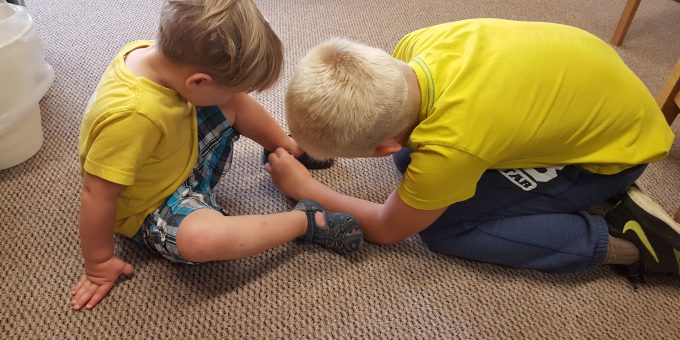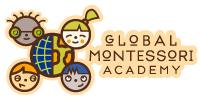At GMA, children learn in multiple-age classrooms. Why? As Maria Montessori observed, older and younger students play distinct and beneficial roles in the classroom and learning environment.
In reality, throughout life, the years spent in traditional school are the only ones where we are segregated by age. As adults, we encounter and have to interact with people both older and younger than we are.
The younger students in each classroom are in the presence of many available role models, and older students assume responsibility for the younger. Not only do they learn to tolerate and act respectfully towards their younger peers, but they also find self-assurance through teaching them what they know. Cooperation replaces competition in a multi-age classroom, since the playing fields are not level.
By staying in a classroom for a three-year period, students also gain a strong sense of community. The teacher has an extended amount of time to grow familiar with his or her students and truly gain an understanding of their individual needs from not only an academic standpoint, but emotionally and physically as well.
Infant Community, 8 weeks to 18 months old
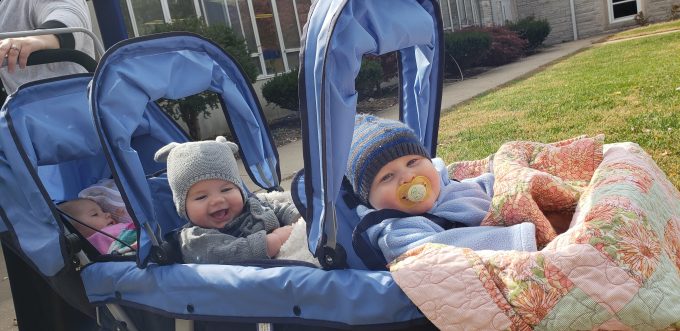
Toddler Community, 18 months to 3 years old
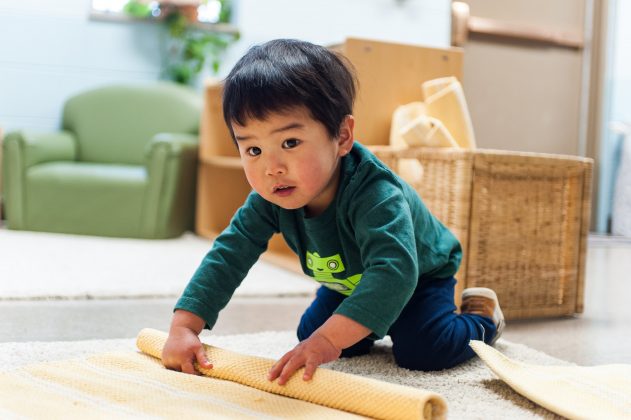 Our toddler students work and play to progress in acquiring physical independence. They enter this program at 18 months old, and they are ready to move and communicate, and are interested in meeting their own needs. As they grow, they become more coordinated in caring for themselves–dressing, feeding and using the restroom. We hear them say, “I can do it myself!” as they move from one activity to the next. The activities offered are simple, suited for the needs, interests, and capabilities of very young children. The pace is unhurried and the children have the opportunity to be occupied with an activity for a period of time uninterrupted. When a child is ready for a new activity, the teacher is ready to give individual attention to that child.
Our toddler students work and play to progress in acquiring physical independence. They enter this program at 18 months old, and they are ready to move and communicate, and are interested in meeting their own needs. As they grow, they become more coordinated in caring for themselves–dressing, feeding and using the restroom. We hear them say, “I can do it myself!” as they move from one activity to the next. The activities offered are simple, suited for the needs, interests, and capabilities of very young children. The pace is unhurried and the children have the opportunity to be occupied with an activity for a period of time uninterrupted. When a child is ready for a new activity, the teacher is ready to give individual attention to that child.
The goals of the program are to foster good learning habits, language development, motor control, social development, how to deal with conflict in a constructive manner, to respect the other children, and to develop a positive attitude toward school and learning. As their time in the Toddler Community comes to an end, we notice that our little ones are more aware of their environment and their peers. When they transition from helping themselves to helping others, we know that they are ready for Children’s House.
Children’s House, 3 to 6 years old
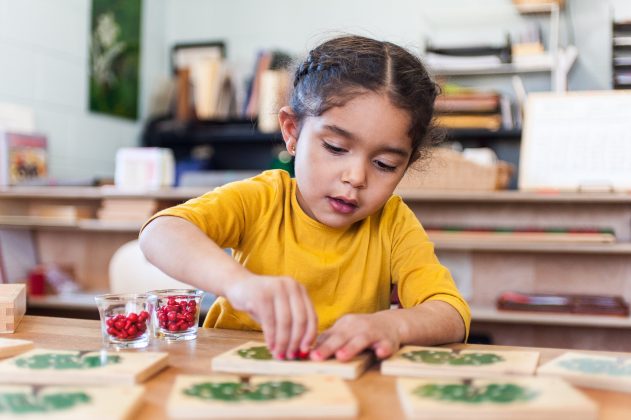 Fundamental to the Montessori theory is the multi-age classroom. Each Children’s House classroom includes children ages three to six. Children come together in an environment prepared to meet the needs of the whole child–the mind, body and spirit. With guidance from a certified Montessori teacher, children work at their own pace and the teacher observes the child’s interests and gives new lessons at the moment of readiness. Working individually or in small groups, they explore the areas of practical life, sensorial, math, and language. Throughout the cycle (3-4 years), the child is given lessons in each area of the classroom with the sixth year (Kindergarten year) bringing together the culmination of the previous years and the important role as leader of the classroom.
Fundamental to the Montessori theory is the multi-age classroom. Each Children’s House classroom includes children ages three to six. Children come together in an environment prepared to meet the needs of the whole child–the mind, body and spirit. With guidance from a certified Montessori teacher, children work at their own pace and the teacher observes the child’s interests and gives new lessons at the moment of readiness. Working individually or in small groups, they explore the areas of practical life, sensorial, math, and language. Throughout the cycle (3-4 years), the child is given lessons in each area of the classroom with the sixth year (Kindergarten year) bringing together the culmination of the previous years and the important role as leader of the classroom.
The Montessori Classroom is a carefully prepared environment. The physical environment is sequential, precise, and attractive. The psychological environment set by the teacher is encouraging and supportive of purposeful activity. Children have a freedom, within limits, to pursue their own needs while learning to respect the needs of others.
Lower Elementary Program, 6 to 9 years old
 The Montessori Elementary curriculum, for children ages six through nine, builds on the Children’s House curriculum and inspires students to become independent thinkers. Their work frequently involves research, discussion, and large-scale projects. The teacher introduces an area of study with a presentation of key information or material and then guides the children in individual or small-groups that explore varied facets of the subject. The spontaneity of exploration sparks the imagination and engages the intellect.
The Montessori Elementary curriculum, for children ages six through nine, builds on the Children’s House curriculum and inspires students to become independent thinkers. Their work frequently involves research, discussion, and large-scale projects. The teacher introduces an area of study with a presentation of key information or material and then guides the children in individual or small-groups that explore varied facets of the subject. The spontaneity of exploration sparks the imagination and engages the intellect.
The Elementary teacher is in continuous contact with each child offering honest reflections and soliciting discussion about whether the child is working up to potential. Each child is encouraged to ask himself: “How much can I do?” and, “How well have I done it?” This approach helps develop a sense of personal responsibility that is not limited by constant comparison to others. Later in life, this personal responsibility will help them make their greatest contribution of talent and wisdom in the competitive 21st century.
Upper Elementary Program, 9 to 12 years old
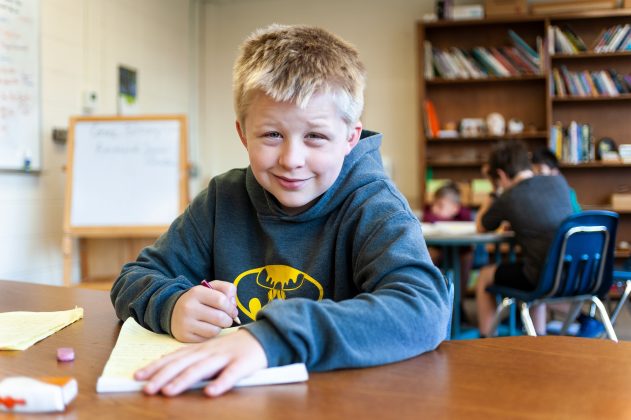
In February 2015, Global Montessori Academy announced that Libby McFarland, long time staff member and former Children’s House 2 Assistant Teacher, was accepted into Montessori Northwest AMI Elementary Teacher training beginning in June 2015. Libby obtained her AMI diploma in 2017. The school sponsored Libby’s training and began offering Upper Elementary classes in the 2016-2017 school year. We are very excited to have this new offering for our children and to have Libby grow with our school!
